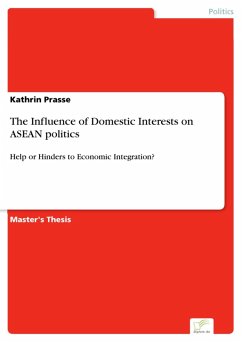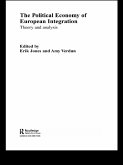Inhaltsangabe:Abstract: Until the 1990s, the Association of Southeast Asian Nations (ASEAN) had a long, however unsuccessful tradition of promoting regional economic development through inter-governmental cooperation. This changed in 1992 with the foundation of the ASEAN Free Trade Area (AFTA), which is regarded as ASEAN¿s first serious step towards regional economic integration. AFTA¿s aim is to abolish trade barriers among the participating countries, be it tariffs or non-tariff barriers. The member countries are therefore required to liberalize their economies through adjustments of their domestic tariff systems and through the elimination of non-tariff barriers (NTBs). The formerly high degrees of economic protection have to be gradually reduced and ultimately abolished completely ¿ measures, that the ASEAN member states were long unwilling to implement. Hence, ASEAN¿s decision to found AFTA in 1992 was very sceptically perceived by the international community. Indeed, the development of AFTA displays two contrary characteristics. On the one hand, the ASEAN members decided to accelerate the implementation of AFTA by five years and complemented it with two additional programmes, the ASEAN Investment Area (AIA) and the ASEAN Framework Agreement on Services (AFAS). On the other hand, the institutional design of AFTA provides the member countries with a high degree of flexibility to prolong or delay the process of implementation and re-negotiate commitments already made. Two conclusions can be drawn from the above stated developments: On the hand, the signing of the AFTA framework in 1992 clearly indicates a major shift in the member states¿ attitude towards regional economic integration. Moreover, the initially quick implementation of the original agreement, as well as its acceleration by five years and the inclusion of those potentially contentious issue areas ¿ namely trade in unprocessed agricultural products and in services ¿ which the member countries had excluded from the original AFTA framework, underline this shifting attitude towards regional economic integration. On the other hand, some member states delayed the implementation of tariff reductions and the negotiation of sensitive products, indicating that they were not equally committed to the process of implementation. These conclusions lead to the two research questions that this thesis answers: Firstly, why did the Southeast Asian states change their preferences towards regional [...]
Dieser Download kann aus rechtlichen Gründen nur mit Rechnungsadresse in A, B, BG, CY, CZ, D, DK, EW, E, FIN, F, GR, HR, H, IRL, I, LT, L, LR, M, NL, PL, P, R, S, SLO, SK ausgeliefert werden.









